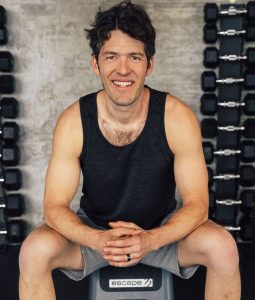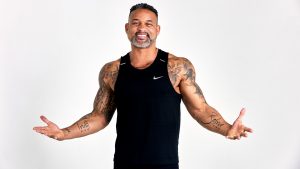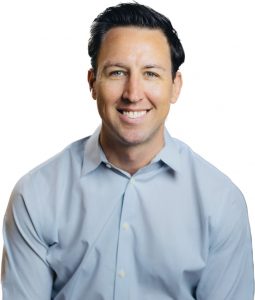SHAWN STEVENSON: All right. Welcome back to the Family Health and Fitness Summit. Got a special treat for you. One of my favorite people in the field of health and wellness. Dr. Amy Shah.Welcome.
AMY SHAH: Thank you, Shawn. And, that goes for you. I know I say it all the time, but for people who don’t know, I’ve, I really do feel like you’re someone I can really trust and count on inthe health, wellness, and fitness world.
SHAWN STEVENSON: That’s awesome. It’s an honor. It’s a total honor. We’ve had incredible conversations, and this one is very important for both of us. We care a lot about our families, we care about our kids, we care about other people’s kids. And helping to create a culture shift is what we’re really working towards. And so I want to start by asking you why is family health andwellness important to you?
AMY SHAH: Because I think, what we know is that it’s passed down through the generations. Like the good habits, bad habits, gut bacteria is passed down through the generations, genetic changes.They, you know, there’s epigenetic changes. Like you can actually change your DNA overgenerations. You can change your microbiome over generations. And so what feels just normal to you today is probably shaped by many generations above you. And so you have the biggest power to change that for your children and for the children after that. By changing the way you eat, the way you talk to them, the way, you interact as a family, ithas a huge impact.
SHAWN STEVENSON: Ooh, this is already getting into some different things we haven’t talked about yet.
AMY SHAH: Cool.
SHAWN STEVENSON:Just kind of even taking a peek inside. Because what the data is affirming is that more so than what we might be sharing as far as, you know, bacteria from our parents. We are sharing bacteria data with the people in our household. We’re more closely related from that front, with our significant other, with our kids, with our pets. Can you talk a little bit about that?
AMY SHAH: Yeah. So the microbiome, they, when they looked at twin studies, that’s the best way to do it, right? Identical twins. They found that the microbiomes, that identical twins, matched their own families, their spouses and their children more closely than even each other. So that whole thing of, nature versus nurture, at least for the gut microbiome, seems to be much more about, nurture, you know, who you’re around, what you’re eating, what you’re doing with your life. And I think that’s really empowering because no matter, you know, you talk about your circumstances as akid, and, I was an immigrant kid. I mean, we didn’t have all the resources, but it makes me think like, oh, we have the power to actually control our future and the next generations, because it’s more about how we’re living, and our food than even our genetics.
SHAWN STEVENSON: Awesome. Let’s talk a little bit about why paying attention to the health of our microbiome and that whole, like, it’s really having a moment right now, why it really matters. And just to, just to parlay on that point with the twin studies. You know, I’m from St. Louis, and some researchers there have collected one of the biggest databases on identical twins, and again, seemingly similar circumstances, environments. All that stuff. But their microbiomes can be dramatically different. And what they found was that twins who had higher ratios, they really looked at two kind of dominant categories of bacteria, but one of the twins having a higher ratio of what are called firmicutes had a higher incidence of being overweight, of developing insulin sensitivity, even if they’re eating the same. What again, on the surface, looking at kind of objective data, same diet, same kind of circumstances, but our microbiome can have a big impact on our metabolic health. So let’s talk about why our microbiome health matters.
AMY SHAH: Oh my God. Such a …. and I’ll get you the link to this study. A new brand new study just came out that I was talking in my newsletter the other day because it’s just mind blowing that there are certain fibers that we’re eating in our diet. So most people don’t realize like fiber is a super food. You know, the food that, vegetables and fruits, the fiber that they contain in them feeds that gut bacteria and that gut bacteria are the army that protects us. Now, you know, we’ve been talking a lot about armies and Navies and battles right now, and I think of that as your most protective, army that we have inside of us. And, they need food and we’re starving them because 97% of Americans don’t get enough fiber. And so over the years, we’re cutting down, I think there’s like 50% less types of bacteria in our gut, compared to generations, before us.
AMY SHAH: So we need to be feeding that gut bacteria for better health. And what we found in a fascinating new study is that when you feed people this fiber, this was an inulin fiber from chicory root. So they just took people, they gave them chicory root fiber after two weeks of having that, I think it was 15 grams, when they looked at pictures of food, their brains didn’t light up in the same way that they did before. Meaning that this change their brain perception of junk foods, they were better able to control themselves around those foods. They were, their brains didn’t light up like fireworks like we usually do when we look at Doritos or a hamburger from McDonald’s. And so what they’re saying is that, and then they transplanted that gut bacteria into animals to confirm that it was the gut bacteria that was doing it. They’re saying that MRIs show that when you change your gut, you change the way your brain processes both food, emotions, cravings, and so much more. So it’s just fascinating. So that’s how the gut really can change the way you think, crave eat food, even your athletic prowess, your, your cognition, all of it.
SHAWN STEVENSON: So interesting. And by the way, inulin, that particular, there’s all these different prebiotic. Compounds that we talk about that are feeding our bacteria, or it’s, it’s really, this is one of the reasons why we see such a dramatic loss of all these species of bacteria that we’re not providing them with the food that they eat. Just like with any creature, if you don’t have the food that they eat, they’re going to go extinct. And so we’ve, we’ve got a lot of different bacteria strains that are on the endangered species list, and many of them have been associated with cardiovascular health, the health of our sleep, our immune system, the list goes on and on. But inulin, as you just mentioned, and we’ll, again, just having access to this kind of information and these kind of experts, you’ll be able, everybody that’s watching this will have access to some of the studies that we’re talking about as well. But inulin’s been found to also help our body to produce more GLP1, which is getting a real.
AMY SHAH: There you go.
SHAWN STEVENSON: Time in the sun right now with anti-obesity drugs, right? But our bodies know how to do this stuff, and it’s also, it’s designed, it’s produced in us for us. But the question is, are we providing our bodies with those prebiotic fibers to do all this cool stuff?
AMY SHAH: I know. So, one of my students was asking, well, where do you get inulin? And I said, well, it’s in chicory root, it’s in Jerusalem artichoke, it’s in, leeks and onions and garlic. But you know, honestly, I feel like the, in the typical American diet, which would be devoid of, a lot of these foods, you’re not getting inulin, on a regular basis or any other prebiotic fiber, to be honest. And so it’s just fascinating what a little change in your diet can do, to help your just overall brain health.
SHAWN STEVENSON: Yeah. And inulin sounds very close to insulin, by the way.
AMY SHAH: Yes.
SHAWN STEVENSON: Which of course is a relationship there too, but our ultra-processed, predominantly ultra-processed diet here, you know, in our modern society, we’re seeing a lot more spikes in insulin versus, you know, looking at the alternative. And now, but this brings us back to some questions, which is, you know, with all the stuff that’s going on out in the, the kind of larger culture scape, what are some of the things that you’ve done done to create a culture of health and wellness within your own household?
AMY SHAH: Listen, it’s hard, Shawn, I, you have teens and I just entered into two teen category, which means, both my teens are active in sports, which I’m so grateful for, because I think that’s the first step, you know, staying active, because then you’re eating the right foods, because you’re trying to fuel your workouts. But they’re, you know, we know that teens are the highest consumers of ultra processed food, and my teens are no different. They wanna eat what their friends, they wanna eat, what they’re like, everybody else is eating. So what I found is that creating a culture at home that looks different, so meaning modeling the right behavior rather than coercing them to change their behavior when you’re not with them, is what I think has worked for me in the past with so many patients. And that’s what I do with my own kids.
AMY SHAH: Just model the right stuff. And when we do family dinners, we do it the right way. And so that way, eventually, I can’t control what they’re doing with their friends, what they’re doing at school, what they’re doing after practice, what they’re doing, you know, at the movie theater. But I can control what we’re doing when we’re together and model that right Behavior so that when, and you know, we know, we all kind of come to that point where we’re like, all right, I gotta, I have to do this. And I hope that they come to that point too. And one of my kids has already come to that point. The other one not yet, but we just keep modeling and we let them say, you know, when you’re ready, you let me know what you need help with, and we’ll help you. Because forcing them to do it is just not gonna work.
SHAWN STEVENSON: All right. So we’ve got something interesting here that you just tied in also, just the fact that they’re active, they’re doing this stuff, being able to tie some of these different behavior improvements, healthier behavior choices to their goals is a helpful thing with kids. And finding that like bridge, like you just said. Trying to make kids do stuff. A lot of times it’s not gonna be successful long term, which we could force people to do things, especially if the, when they’re children. But we tend to do, and, we’ve done this, I know I have, once I got out of my parent’s house, I rebelled, right? We had a, you know, a certain time couldn’t just be up watching TV all night. Guess what I’m about to do now? Haha. You can’t tell me what to do. Same thing with all the different foods that I was eating, you know, and going to a college campus where we had basically a buffet that was open 24/7, come on, it was ridiculous how much like cereal and donuts and all this stuff that I was eating. It’s Crazy.
AMY SHAH: We had this cafeteria that was open like in the middle of the night. And, I just remember that we would go there and people, we’d be having a full on fried food meal at like 3:00 AM And it’s just wild to me that like, that’s just a thing in college.
SHAWN STEVENSON: Yeah. It’s bananas. Now a question for you with that modeling. So you mentioned the importance, of course, of staying active as a family, having specific implements that make that possible. You mentioned modeling, which is a really common, it’s a common theme when talking about how to create a healthy family culture within that modeling piece. So what are you doing specifically as far as your own behaviors that you are allowing your kids to, to witness?
AMY SHAH: We turn the light off in the kitchen after a certain time, and it’s like locked, yeah, if you wanna have a glass of, you know, water, you wanna have a yogurt, you can, you have some fruit you can access yourself, but we’re not having a buffet dinner, late at night. And the reason I do that is that I think it’s very tempting, especially, like I said, I’m dealing with teens they come home late and they’re, we basically say, you know, if you’re coming home late, here’s your dinner, it’s ready to go. But like, there’s no, I’m not cooking, there’s no like, food culture going on at like, because I’m a big believer in circadian rhythms as and, I truly believe that even though they’re shifted, and a lot of people don’t realize this, but in the teenage years, adolescence years, it’s a little bit shifted.
AMY SHAH: That’s why they tend to kind of wanna sleep in and eat later. And that’s okay. But it’s still like, I wanna teach them that you eat the bulk of your calories during the daylight hours, and then what you’re eating is a, is a lighter dinner. And definitely not like a buffet, like this whole college culture of like a full, french fries hamburger and a milkshake meal, you know, late at night is just, so that’s one thing that I definitely do. Second thing I heard at one of my, son’s high school freshman, intro, it was like a, it was like a parent’s retreat. And one of the seniors got up there and he said, create a tradition with your kids Now they’re 14 they’re still young enough, they’re not driving. He’s like, because as they move through high school, they’re gonna drive and they’re not gonna be in the car.
AMY SHAH: You’re not just gonna see them here and there. And if you don’t have a tradition like a family dinner on Sunday, or a church, you know, meal after, on a Sunday, or, maybe it’s a Friday night thing or something, you are gonna lose touch with them. And so they’re like, whatever it is, just create a tradition. It doesn’t have to be every night. It can be a few nights a week. It can be one night a week, just do something. It doesn’t have to be necessarily a full meal. It can be, going out for some having something at home where you sit around a table. And I thought that was so helpful because I thought to myself, well, yeah, that’s a good point. Because they start to have practices and they start to have friends, and they start to have plans that are separate.
AMY SHAH: And this little kid who used to be this we used to say like, oh, we got, it’s, they’re just around all the time. All of a sudden they’re just not around at all. So, creating a tradition. So we said, okay, yeah, that’s a great idea. So if nothing else, you have a time in the week, a couple of times in the week to do a check-in and sit around the table and do this. And, you talk about the research, it’s very clear that, children who are exposed to that kind of family dinner, ritual are, just benefit in so many ways.
SHAWN STEVENSON: Yes I love this. So that’s a great takeaway for everybody is to create a tradition if we have a, if we just kind of stumbled into some of this stuff, the best time to start is now. It might have been, you know, sometimes we carry these stories like, well, I should have done, Regardless of where our kids are at in that age spectrum, it’s not too late to create a family tradition. And this is the thing is like, these things get passed on as well. Culture gets passed on from one generation to the next. So it’s a great time right now to start. And you mentioned circadian medicine in there. So I don’t wanna slip past that. What is that and why does that matter for our health and for our family?
AMY SHAH: We found out recently, a Nobel Prize winner actually. That circadian rhythms, the day and night patterns. So basically the 24 hour rhythm that our earth kind of goes through, sunlight during the day, darkness during the night, they inform that informs our brains and our hormones and our bodies what to do at certain times. So no matter what, even if you work a night shift, even if you sleep till two o’clock in the afternoon, your body is always going to work on a day and night rhythm. And your hormones will always work on a day to night rhythm. So what I mean is the closer you align yourself with these circadian rhythms, the better your energy levels, the better your mood, the better your, body composition. And what I found is like, it’s something that we barely take, We take it so for granted in our world, and I noticed really when, like during the Covid pandemic, and we were indoors all the time, and a lot of us were staying up very late at night ’cause there was no kind of schedule at that time.
AMY SHAH: And people were just having mental health disease at skyrocketing rates. They were, having health problems. And so much of this is a circadian rhythm problem. There are depression researchers who believe that a large portion of mood is circadian rhythm based. I mean, that is like crazy. We have all these meds and, therapists and like, we have all this, money that’s being thrown into the research. And what we’re not doing is saying, Hey, you know what? If you got 30 minutes of sunlight, or at least just not even sunlight, just natural light a day, if you get, six to eight hours of sleep plus a night, if you stop eating super, super late at night, all of these things, aligning yourself better with circadian rhythms can maybe get you out of a state of, disease or depression or anxiety, these are potentials that are just so, so fascinated that we just miss it, we just overlook it. Like, oh, whatever. I’m too busy to go get sunlight.
SHAWN STEVENSON: Amazing. And you’ve been sharing this information at such a high level about circadian medicine and like how our bodies are always, again, trying to sync up with this 24 hour solar day. And, but what’s so interesting about humans is we can kind of hide out from those natural inputs. And light is really the leading input that’s determining this body clock and this circadian clock, as you’ve shared in our past conversation, is influencing our bacteria. It’s influencing our gene expression. This is serious business, but we don’t think about this again. Like we’re in this culture right now where again, we’re just throwing drugs at the situation, at symptoms and not looking at like, wow, this person is out of… Literally out of alignment with all of life on planet earth right now. Because we neglect to understand that we are part of nature as well. Strangely, like we’re so weird when we do that. Now, I want to ask you this question because with you… Like you mentioned, at the end of the day having healthier choices for your kids to have dinner, that sounds great and we all wanna do that, but one of your bestselling books is So Effing Tired, how do you make sure that you’re feeding your family healthy meals when you’re so effing tired yourself?
AMY SHAH: So I found something out really, recently, Shawn, that I wanted to share. So what we understood from the research is that ultra-processed foods and ultra-processed dinners are the problem, when you boil it down. So what does ultra-process even mean? Because all foods are like processed a little bit, right? Like you can’t…, you’re not picking it from the farm, except for fruits and vegetables if… It’s ultra-process has a specific meaning in the literature, it’s defined basically as food that has substances in the ingredients that, could never be recreated in a kitchen. Meaning that there, it’s not a food, it’s a chemical. And for example, Doritos, no matter how many ingredients you had on hand, you could have 300 ingredients, everything in the culinary, like, kitchen, but you’re not gonna be able to make them.
AMY SHAH: And same thing with, even like a bean burrito from Taco Bell, which seems like, oh, shouldn’t it just be beans and cheese and sauce and tortilla? No, it’s got all these ultra-processed ingredients in it. And so what I learned is like these simple things like pasta bean burritos, like tacos, like when you get it from an ultra-processed source, that’s the problem. It’s not the food itself. So you could make tacos at home with veggies, real beans or meat and tortillas, and you are gonna be giving your kids a much, much healthier meal. And how long did it take you Just enough time to heat everything up, like, you can make a bean burrito with even canned black beans and it’s gonna be… Going to give your body and your family’s body the nutrients it needs that it’s far better than a fast food burrito. And so what I learned very recently is that it doesn’t have to be like, you don’t have to spend an hour and a half prepping and then an hour cooking it, and then an hour, like this whole old tradition of, very fancy cooking. It doesn’t have to be like that. It can be as easy as getting real ingredients and making a simple meal.
SHAWN STEVENSON: Yeah. Oh, I love that. And that’s the crazy thing is that a lot of times not only does the food taste just as good, it could taste even better, but it’s that like convenience and a lot of those synthetic ingredients that are created for these different ultra-processed foods, they are… Of course, we know that they’re kind of manipulating our palate, our brain, and all these different things. And so we start to get programmed with this belief that real food doesn’t taste as good. And that’s part of the marketing piece of this as well. And so I want to ask you about this as well, you know, dealing with like if our kids are a “picky eater”, and is this something that you’ve dealt with? Do you have any advice for parents to like, expand the range of foods that their kids are eating?
AMY SHAH: Yeah. Something very, very simple. Again, same thing along the same lines as a simple meal. So instead of maybe doing a frozen mac and cheese or something, you can take real pasta, like, just a boxed pasta and add in a sauce of your own. It can be like, you could do a red sauce, a cheese sauce, something… So that it’s like these micro changes. So you’re still getting mac and cheese or you’re still getting pasta with red sauce and cheese on top, but you’re, making it from a source that… Just a simple thing of like actual real tomatoes or something as simple as, you know, adding real cheese rather than… It sounds so stupid, but there’s not even real cheese in these, macaroni and cheese products. So simple little switches or it is something that I think that can make a big difference.
AMY SHAH: Like it doesn’t have to be like, well, you’re still giving them pasta and mac and cheese. Like, why is that better? No, it is better because you’re… This is a picky eater. They may say, oh, I only like pasta. You can make these small changes in it. It never worked for me. I’ve done all these things where you like sneak in the broccoli in there and you like do all this stuff. And I just feel like, even if you’re just eating whole real version of that kind of fast food, just like I gave you like the example of a bean burrito, I think that’s a super easy example. You’re using real cheese, real beans, real tomatoes for the salsa that is a healthy meal compared to what they would be getting at a fast food place.
SHAWN STEVENSON:Okay. So your major method is to upgrade the…
AMY SHAH: Yeah. The Ingredients.
SHAWN STEVENSON: Kind of ultra-processed version of foods that kids love.
AMY SHAH: Yes. I think that…
SHAWN STEVENSON: Rather than like, here eat this brussel sprout.
AMY SHAH: Yeah, I think that you can do that to a point, you always wanna keep modeling you’re eating it, you’re eating vegetables, you’re eating… Find out the vegetables that they like. But there does come a point where when you’re talking about picky eaters that you gotta just go back to the basics and just say, you know what, let’s just take what you love and just upgrade it a little bit.
SHAWN STEVENSON: I love it. This is a soft place to land… I like that. All right. Now I can’t have you here without asking you about this because part of that family culture of wellness has to do with everybody getting good sleep, we know this is vital for our immune system, for our cognitive function. The list goes on and on. So going back to being so effing tired, if we wanna have the energy to do some of this stuff, because even having the patience to talk with your kids about nutrition or to make a healthier meal, a lot of times we’ve gotta have the energy ourselves. So can you talk about the importance of sleep within our family culture?
AMY SHAH: Sleep is the… Maybe I’ve asked so many experts when I was in training, and I truly believe that this is true, that if you had to pick one thing like, oh, should I exercise? Should I take the supplement? Should I X, Y, and Z? If the choice was to sleep five hours or less, or to sleep six hours or more, I would say that that latter choice of sleeping is always a healthier choice. And so I’ve really put in the culture of sleep in my family and I hope that it sticks and they complain, so and so’s parents let them stay up ’till this time. And, it’s definitely a battle because we live in a world where they… People just don’t value sleep, and they don’t value sleep in their family structures. But I truly believe that it can be a game, like you said, mood, cognition, like relationships, emotional stability. Your emotional regulation just changes when you don’t get enough sleep. Your ability to make good decisions about food and in school changes when you don’t get enough sleep. So I’m a big, big believer in sleep and I try to instill this into the family.
SHAWN STEVENSON: Awesome. So as you were alluding to so many top experts are pointing at sleep as being the, like the biggest force multiplier more so than our… Yes, Our diet is important yes, Exercise, all the things, but if you can ensure that you’re getting the right amount of sleep for you and also for your kids, that’s gonna pay off bigger dividends than anything else.
AMY SHAH: How are you sleeping with all this, craziness with your new book? Like, I’m curious. Like I had a hard time with that when I had my book… I know that I had to say to myself like, no, like this is the paramount. Like this makes me a better person, so I don’t care. I’m getting enough sleep. I would plan the travel around that.
SHAWN STEVENSON: Same, I plan to travel around it, I took certain flights, I made sure that I’m scheduling around like being able to be well rested… And of course like there’s gonna be changing time zones and all the things, but to the best of my ability, I’m helping to stack condition to making it a priority. There’s no need to beat myself into a pulp. In the name of health and getting out and promoting health and wellness. Like that’s just, it’s so silly.
AMY SHAH: It’s so silly.
SHAWN STEVENSON: But I think we just don’t think about it. We don’t think that we have the power to make these choices. And I know that this was part of my story too, you know, when I was in college, I worked at a casino, and I had to be at work at… For one phase of working at this place, my shift started at 3:30 AM and It’s insanity.
AMY SHAH: Oh God.
SHAWN STEVENSON: It’s insanity for a college kid. And I’m like… But I told myself this story, like, this is the only job that I can get where I can make enough to whatever, you know, I had this story. And so it is, and so it is that my perception became my reality, but that wasn’t by far not the only option that I had. And, but things become more complicated when we bring kids into the equation and that’s why this summit is so important. And so what are a couple of things that you’ve done as far as making sleep a priority in your household?
AMY SHAH: Okay. If you can’t control your surroundings, control yourself. So, sleep masks, earplugs, making the room cold, like whatever, wherever you are traveling. So I coach a lot of doctors actually. So I have these doctors that sleep in the hospital sometimes, you know, on call OBGYNs. And we come to the point where, they, like one of them says, I travel with like a sleep kit. Like if I’m gonna be sleeping for a couple of hours, I need my earphones, my face mask. I’m gonna put my white noise on, like my pillow. And make your sleep environment yours so that your body knows and you know that it’s time to get a good night’s sleep. And you don’t have to depend on all these external factors. We know that ambient light, even if it’s a night light, is disruptive for, hormonal rhythms during the night.
AMY SHAH: We know that having, sound awakenings multiple times can be disturbing. Especially if you sleep with a snore, a person who snores or you’re sleeping in a new environment like a hotel room or a call room, for example, if you’re on call. So those are the things that I learned over the years. I used to be… I used to call myself a light sleeper because all of these things would determine my fate and then in the morning I’d be like, I’m so tired ’cause I got woken up by X, Y, and Z. So yes, I know that people with very young kids, I couldn’t, wear my ear plugs and sleep mask and your… ’cause you’re just woken up so many times in the night, you have to be on, alert. But when I would get that time to take a nap or do it, you just do it in a way that you can control your surroundings.
AMY SHAH: So that’s my number one tip. And number two is keep it consistent as you can, as consistent as you can. I know that of course we wanna have social time on the weekends, but don’t shift it more than two hours if you can. Like, even on the weekends, like if you’re someone who goes to sleep at 9:00 on the weekdays, maybe you shift it to 11:00 but don’t go much past that. ’cause then it’s a really hard, much harder jet lag to recover from, when you are doing it. And it’s harder to fall asleep when you’re on such an inconsistent schedule all the time. So schedule regularity and make your sleep as comfortable as possible and sleep in a cold room. Like I think that’s something that goes without saying, our temperature has to… Our core body temperature has to drop one degree for us to fall asleep. And so if you’re in a hot room, you’re wearing some crazy pajamas, you’re… It’s going to impede your sleep. So that’s another like, very, very life-changing simple tip. Is keep the room really cold.
SHAWN STEVENSON: I love it. And again, this is all… We’ve got a robust dataset now with people that are even diagnosed with insomnia. Helping them to cool off in the evening actually helps them to fall asleep faster and stay asleep, so sleep latency is improved and also less interrupted sleep as if they were suddenly they didn’t have insomnia anymore. And one study, and actually I talked about this in my first book in Sleep Smarter, found that they actually fell asleep faster than people without insomnia just by cooling them off.
AMY SHAH: Yeah. Such a huge…
SHAWN STEVENSON: So yeah, this is real talk, very simple stuff. And so I’ve got one more question for you. And especially again, since we’re talking about family, we’re talking about wellness, we’re talking about connection. Can you share a little bit about family table culture, like family mealtime culture for Dr. Amy Shah and her family?
AMY SHAH: Okay. So I read a study that says that even if you have your phone out on the table, next to you, the person doesn’t feel as connected to you. So, and I think that’s true even, because you always feel like your attention is slightly on the phone. And in this hyper-connected world we live in, I think that the best family table culture is like one have a culture, like we said, like set a time of the week that no matter what’s going on, we all have very incredibly busy lives. We all travel, but even if it’s just once a week, Sunday dinner that’s a good one. Put your phones away for the… That maybe it’s a short period of time, not the entire dinner. Maybe it’s like, all right, time to put our phones away and you’re… It’s out of sight because the study show that out of sight is really what helps you connect.
AMY SHAH: And then having conversations, I think that the art of conversation without our phone has really dwindled. And so I think that what you’re, what you talk about this, you know, all the benefits of having meals together is really about just connecting and sharing time, space, and food together. I think that’s the main thing. So I think that really trying to protect that time as your secret time every week is really important. And I say once a week, but that’s kind of like what I would say is what a lot of people can say is the bare minimum or sometimes a bare… It’s a maximum that they can do. But if you can do it three to four times a week even better.
SHAWN STEVENSON: This is so good. You just pointed out one of the… Another big takeaway from this conversation, which is quality matters in some ways more than than quantity. So making the time that you do have count being present, let’s make it a phone free zone and just don’t bring them to the table ideally, because again, like you just mentioned, just it being in sight truly within our… Even in our periphery, like we don’t even have to like stare at the phone, but just it being near us, our brains know that there’s infinite amounts of goodies in that device that can take us into another domain. So we don’t bring ’em to the table in my house. It’s just one of the things that we… This was from years ago.
AMY SHAH: That’s great.
SHAWN STEVENSON: Years and years ago and then the data came out more recent… ’cause I just saw it just… It just seemed obvious. Because for me too, like even if I’m just picking it up to like change the music or whatever. If we got music playing in the background, like I might see, oh, this email came in or whatever, and it can pull me away from my family. And so if I want to… First of all, I’ve got some pre-made playlists teed up, which I recommend everybody making their own own playlist.
AMY SHAH: Love that.
SHAWN STEVENSON: And, but if I wanna get up and like, change something or whatever, like I have to get up and go to my phone and do it so I can sit back down and be present with everybody.
AMY SHAH: That’s awesome. Well, I have to say, one last thing is my son recently, he’s just turned 16. He had a big fall at… Injury and he had to have his jaw wired shut. Like his… He broke his jaw. It was terrible. And not having, we even did the tradition while his jaw was wired shut and he could literally only have liquids through a straw. We still did it because we were like, it’s not about the food. Like you can have, he was having his shake and soup. But it’s about the tradition of just like spending time together and having that kind of regularity of connection, that was so important more than the food.
SHAWN STEVENSON: Wow, that first of all, is he doing a lot better now? I’d imagine?
AMY SHAH: Yeah. Oh God. Imagine being 16 going to school, not being able to talk, not being able to do sports, not being able to eat. I mean, he lost 15 pounds. He was, there’s only so many protein shakes and soups you can eat he didn’t wanna do the blended meals like a lot of people do, so it was very tough. But he’s on the mend and he’s got some food in his system and it made all the difference.
SHAWN STEVENSON: Awesome. That was such a great example too. Thank you for sharing that because again, we get all these reasons and obstacles come up, things happen in our lives and they’re going to continue to happen, but having this practice, it’s like an anchor for us. It’s like something to center us and to unify us as a family and there’s nothing more important than that. So it just really helps us to kind of keep our finger on the pulse of our family’s heartbeat and regardless of circumstances, if we can make it a mandate to again, even that one a week that is scheduled and sacred and in that tradition is far better than nothing, so thank you so much for sharing your wisdom. Can you share with people where they can pick up your books? You’ve got a couple of great books. And just where they can also just connect with you in general.
SHAWN STEVENSON: Yeah great pretty much, my hub is amymdwellness.com, so A-M-Y M-D and then wellness.com is kind of where my, all my social platforms. I’m at FastingMD on Instagram and my books are also available on Amazon or my website. It’s, “I’m So Effing Tired” and “I’m So Effing Hungry”.
SHAWN STEVENSON: Awesome. So good. And the books are so good. So good. Amy, you’re the best. Thank you so much for taking the time and hang out with us.
AMY SHAH: I’ve loved it. Thank you for having me. And I love, love, love this treasure.
SHAWN STEVENSON: Let’s go Eat Smart everybody. Thank you for tuning in.












